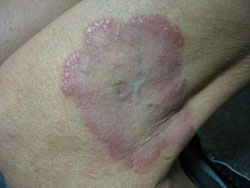Granulomas are common to both men and women but sometimes they can be very difficult to treat
Treatment for granulomas depends on the type of granuloma. Treatment for granulomas generally is not necessary though. Most granulomas fade away within a few weeks and never last more than a few years.
However, if you are really bothered by how the skin feels or looks, ask your doctor whether there is a treatment that can help them fade quicker. Treatments for granulomas that don’t fade away may include taking antibiotics, which are used to kill the bacteria that cause acne. Also, if your granuloma has any infection, it could be treated as well, including oral antibiotics.
There are also many other treatment options for granulomas that don’t fade away. These include surgery, laser therapy, and photodynamic therapy. Treatment options for granulomas are generally dependent on the kind of granuloma, what is causing it, and how severe it is.
Surgery is probably the most common treatment option for granulomas that don’t fade away. Surgery is used to remove the skin around the granuloma, which is known as surgery of the epidermis. If the skin around the granuloma is badly damaged, it can eventually die and fall off.
Surgery is usually the first treatment option when you first notice any symptoms associated with your granuloma. It may be necessary to remove all of your skin or parts of it to get rid of the infection that causes the granuloma. This surgery is called excision and if done properly can often completely eradicate the infection.
Photodynamic therapy is another option. During photodynamic therapy, your surgeon will use light and heat to treat the granuloma. The light and heat may actually penetrate the skin to break down the skin. You may be able to keep the infected area from growing back after this therapy.
Laser therapy is often used as a second treatment option after photodynamic therapy. After light and heat treatment, the surgeon usually repeats the laser therapy. or other treatments to kill any remaining bacteria. It can cause scarring, but in many cases it can be completely removed after a few treatments.
Some people choose to use this treatment even after their granulomas have disappeared
These people may want to find a more permanent solution to their skin problems. A more permanent solution may include surgery on the surrounding tissue.
Granuloma annulare can sometimes be treated with surgery, which does not remove the skin. This is called excision. Several procedures may be required to completely destroy a granuloma, so you will have to go through several procedures if this option is chosen.
In some cases, surgery on the underlying tissues can also be used. This is usually used in very severe cases of granuloma annulus.
Chemotherapy is the final treatment option in some cases. Chemotherapy is often prescribed in situations where your granuloma is extremely serious and it is impossible to eradicate it by laser therapy or photodynamic therapy.
Your doctor may decide on surgery, photodynamic therapy, or surgery as the final treatment option for your granuloma annulare. In some cases your granuloma may not respond to any of these treatments and you will need to undergo surgery or radiation.
The final treatment option for your granuloma is dependent on the seriousness of your condition. If your granuloma is severe, you should always be sure to discuss this with your doctor.
The treatments that are used on your granuloma will depend on the type of granuloma. The treatments may be more invasive than the treatments used on more benign skin conditions, but many people find that the pain and discomfort associated with treatments are often worth the results that they get.
Laser therapy is a common procedure. This involves applying an intense amount of light to the affected area. Many doctors believe that this helps kill the bacteria that is in your granuloma and also destroys the scar tissue that is left behind.
Radiation therapy is often recommended if your granuloma is cancerous or large and if there are deep roots in your skin. The radiation helps kill all of the bacteria that are in the granuloma.
